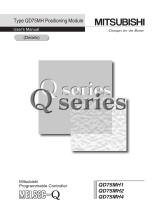
− I −
CONTENTS
1. OVERVIEW................................................................................................................................ 1- 1 to 1-1
1.1 Features........................................................................................................................................... 1- 1
2. SYSTEM CONFIGURATION.................................................................................................... 2- 1 to 2- 8
2.1 Software Makeup ............................................................................................................................. 2- 1
2.2 System Configuration....................................................................................................................... 2- 3
2.3 Component List................................................................................................................................ 2- 7
2.4 SW3RNC-GSVSETE Makeup ......................................................................................................... 2- 7
2.5 Operating Environment .................................................................................................................... 2- 8
3. INSTALLATION AND UNINSTALLATION.............................................................................. 3- 1 to 3-33
3.1 Installation........................................................................................................................................ 3- 1
3.2 Registered Icons ............................................................................................................................. 3-12
3.3 Created System Directories ............................................................................................................ 3-16
3.4 Operating Instructions..................................................................................................................... 3-17
3.4.1 Precautions for Using SW3RN-GSV43P.................................................................................. 3-17
3.4.2 Precautions for Using SW20RN-DOCPRNP............................................................................ 3-19
3.4.3 Precautions for operation under Windows 98 .......................................................................... 3-22
3.4.4 Simultaneous execution of SW3RN-GSV[ ][ ]P and SW6RN-GSV[ ][ ]P ................................. 3-24
3.4.5 Simultaneous execution of SW3RN-DOSCP and SW6RN-DOSCP........................................ 3-25
3.4.6 Precautions for using SNETP................................................................................................... 3-26
3.5 Uninstallation................................................................................................................................... 3-30
3.6 Browsing the SW3RNC-GSVHELPE Operating Manuals............................................................... 3-31
3.7 Updating Instructions and Procedures............................................................................................ 3-32
4. SSCNET COMMUNICATION DRIVERS................................................................................. 4- 1 to 4-33
4.1 SSCNET Communication Driver Setup Procedure.......................................................................... 4- 1
4.1.1 When using the A30CD-PCF interface card ............................................................................. 4- 1
4.1.2 When using the A30BD-PCF interface board............................................................................ 4- 4
4.1.3 When using the A10BD-PCF interface board............................................................................ 4- 6
4.2 How to Check the System Resources.............................................................................................. 4- 7
4.3 Setting the Interface Board .............................................................................................................. 4- 9
4.3.1 Setting the A30BD-PCF Interface Board....................................................................................4- 9
4.3.2 Setting the A10BD-PCF Interface Board.................................................................................. 4-11
4.4 Registering the SSCNET Communication Drivers.......................................................................... 4-13
4.5 Stopping the SSCNET Communication Driver................................................................................ 4-26
4.6 Communication Settings Using GSV[ ][ ]P...................................................................................... 4-30
4.6.1 Communication errors.............................................................................................................. 4-32
5. TROUBLESHOOTING.............................................................................................................. 5- 1 to 5- 6
5.1 GSV[ ][ ]P or DOSCP does not start or it is terminated during operation......................................... 5- 1
5.2 If communication over SSCNET or via RS232C fails with GSV[ ][ ]P.............................................. 5- 2
5.3 If communication over SSCNET fails with DOSCP.......................................................................... 5- 4
5.4 If no sampling data is obtained from DOSCP .................................................................................. 5- 6
5.5 When SNETP is booted, "Not enogh memory" error occurs............................................................ 5- 6























